For years, the album Fiends & Angels has been one of the best kept secrets from the late 1960s blues-rock scene. Finally in 2008, the independent CD label Wounded Bird, which specializes in albums that the majors refuse to reissue, released this Martha Velez gem.
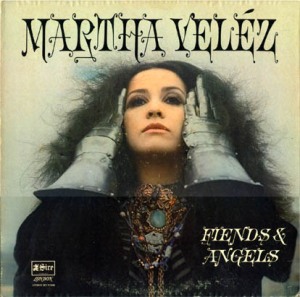 Until then, it had fetched rather pricey numbers on auction sites despite not having been a big seller at the time of its release in 1968. Still it was one of the defining blues-rock albums of the times, bringing together an almost perfect combination of singer, players and producer for a raw blues outing with unbridled energy. And some of the best playing by some of England’s best musicians.
Until then, it had fetched rather pricey numbers on auction sites despite not having been a big seller at the time of its release in 1968. Still it was one of the defining blues-rock albums of the times, bringing together an almost perfect combination of singer, players and producer for a raw blues outing with unbridled energy. And some of the best playing by some of England’s best musicians.
Not available in the album credits and still not known completely, the personnel included, Eric Clapton, guitar; Jack Bruce (Cream), bass; Mitch Mitchell (Jimi Hendrix) and Jim Capaldi (Traffic), drums; Brian Auger (Oblivion Express), organ; Christine McVie (Chicken Shack, later Fleetwood Mac), piano; Keef Hartley, drums, and Chris Mercer, sax (Keef Hartley Band, John Mayall); Chris Wood (Traffic), sax and flute; and Duster Bennett, harmonica. That’s just a portion of the list.
Velez is a New Yorker, who studied opera at a young age and later attended the High School for the Performing Arts in Manhattan. She also joined a touring folk group, the Gaslight Singers, in college (Long Island University) and later had several lead roles on Broadway, including Hair. So how did she wind up recording her first solo album in England with all these prominent blues-rock musicians?
While recording a demo in New York with producer Richard Gottehrer, Seymour Stein of Sire Records was in the studio by coincidence. They immediately wanted to sign Velez and when it was revealed she loved the blues and particularly the material Cream was doing, they hooked her up with Mike Vernon, an English blues producer who had worked with the early Fleetwood Mac, John Mayall and later Ten Years After, among many others. He was also the founder of the blues label, Blue Horizon.
Vernon gathered together the elite group of musicians and a torrent of hot, inspired performances was unleashed on the material, matched perfectly to Velez’s voice, which has a trained quality but can be raunchy when needed.
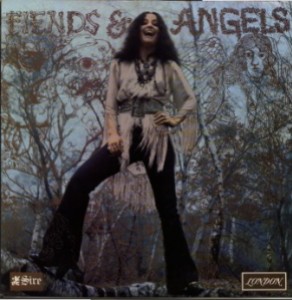 The guitar solos are ferocious on most cuts and although Clapton is said to have played on only four, he is extremely recognizable on the heavy groove of Lightnin’ Hopkins’ Feel So Bad, I’m Gonna Leave You (perhaps the album’s best two tracks), It Takes A Lot To Laugh, It Takes A Train To Cry and In My Girlish Days. This was confirmed on a Velez compilation, Angels Of The Future Past, released on CD in the late ’80s. The other solos are just as powerful and inventive, perhaps attributable to the only listed guitarist on the session, Rick Hayward, although Spit James (Keef Hartley) and Paul Kossoff (Free) are said to have also participated.
The guitar solos are ferocious on most cuts and although Clapton is said to have played on only four, he is extremely recognizable on the heavy groove of Lightnin’ Hopkins’ Feel So Bad, I’m Gonna Leave You (perhaps the album’s best two tracks), It Takes A Lot To Laugh, It Takes A Train To Cry and In My Girlish Days. This was confirmed on a Velez compilation, Angels Of The Future Past, released on CD in the late ’80s. The other solos are just as powerful and inventive, perhaps attributable to the only listed guitarist on the session, Rick Hayward, although Spit James (Keef Hartley) and Paul Kossoff (Free) are said to have also participated.
Jack Bruce is equally recognizable for his driving bass lines, all tight, punchy and restrained. Bennett blows heavy duty harp on both I’m Gonna Leave You and Feel So Bad, and Vernon also made liberal use of horns, giving the sessions yet another dimension.
The album contains so many other jewels: Velez’s funky composition Swamp Man, which holds the album’s title in the lyrics; the Joplin-esque slow blues A Fool For You; a cover of Etta James’ Tell Mama; the moderate shuffle of a smouldering Drive Me Daddy, over which Velez wails; Come Here Sweet Man, a delicate Velez original; and Let The Good Times Roll, the suitable rollicking closer. A great selection of songs.
Velez went on to record four other albums in the ’70s, including a reggae release, Escape To Babylon, produced by Bob Marley. She never fully returned to an album of all blues, although she did work with Vernon one more time on Matinee Weepers. Married to Keith Johnson, noted trumpet player with the Paul Butterfield Blues Band and Van Morrison, she also sang with Morrison’s band for a while. All her records, with the exception of her second, Hypnotized, are available from Wounded Bird.
You are unlikely to find Wounded Bird releases in a big music or electronics store at the mall. They are readily available at places such as Amazon. But a trip to the label’s web site is preferred because perusing its catalogue, you’ll find so many other long lost albums that haven’t seen the light of day on a major label.
My vinyl version of Fiends & Angels is still one of my most treasured from that time period. Even one in funky condition is fetching as much as $50 on eBay, despite the CD release. You have to love that album cover, too. The second image is from the UK release. For the record, Velez’s full name is Martha Carmen Josephine Hernandéz Rosario de Veléz. That’s an earful and so is this classic album.

 Cream was scheduled to play at Boston’s Back Bay Theatre in April, but they were also going to play near my hometown in New Haven at Yale’s Woolsey Hall on April 10th and I decided to come home for that, mainly because I had a new girlfriend who was still in school in New Haven. This would be our first big concert date. That made sense.
Cream was scheduled to play at Boston’s Back Bay Theatre in April, but they were also going to play near my hometown in New Haven at Yale’s Woolsey Hall on April 10th and I decided to come home for that, mainly because I had a new girlfriend who was still in school in New Haven. This would be our first big concert date. That made sense. Diana Krall’s Quiet Nights, at first, begs for an evening with the lights down low, a bottle of wine and your significant other. But it also plays well for a sunny, sandy beach day with its Brazilian connections. Fully three of the 10 main selections are from the book of Antonio Carlos Jobim, including the title track, and one by Marcos Kostenbader Valle and Paolo Sergio Valle, the wonderful So Nice. Most of the others share a bossa feel.
Diana Krall’s Quiet Nights, at first, begs for an evening with the lights down low, a bottle of wine and your significant other. But it also plays well for a sunny, sandy beach day with its Brazilian connections. Fully three of the 10 main selections are from the book of Antonio Carlos Jobim, including the title track, and one by Marcos Kostenbader Valle and Paolo Sergio Valle, the wonderful So Nice. Most of the others share a bossa feel. I was having mid-afternoon waffles at a small breakfast/dinner restaurant near Kenmore Square when my buddies, one of whom was a fellow bass player from Connecticut, and I found out that Cream, yes that Cream, would be playing practically across the street at a new club called the Psychedelic Supermarket. I was astonished by my good fortune that Cream, one of my favorite bands would be in town, just a few blocks from my dorm on Commonwealth Avenue, and that they were scheduled to play for two weeks! I intended going more than once.
I was having mid-afternoon waffles at a small breakfast/dinner restaurant near Kenmore Square when my buddies, one of whom was a fellow bass player from Connecticut, and I found out that Cream, yes that Cream, would be playing practically across the street at a new club called the Psychedelic Supermarket. I was astonished by my good fortune that Cream, one of my favorite bands would be in town, just a few blocks from my dorm on Commonwealth Avenue, and that they were scheduled to play for two weeks! I intended going more than once. He launched into what has become in the past few years his traditional opener, Beck’s Bolero, a Jimmy Page composition from the classic 1968 Truth album with the Jeff Beck Group, which influenced most of the heavy blues-based rock that would follow in the 1970s (see Led Zeppelin). The album cut is heavily produced. In concert, the tune benefits from a scaled down, tight, spare version with his four-piece band: Vinnie Colaiuta, drums, Tal Wilkenfeld, bass and Jason Rebello on keyboards.
He launched into what has become in the past few years his traditional opener, Beck’s Bolero, a Jimmy Page composition from the classic 1968 Truth album with the Jeff Beck Group, which influenced most of the heavy blues-based rock that would follow in the 1970s (see Led Zeppelin). The album cut is heavily produced. In concert, the tune benefits from a scaled down, tight, spare version with his four-piece band: Vinnie Colaiuta, drums, Tal Wilkenfeld, bass and Jason Rebello on keyboards.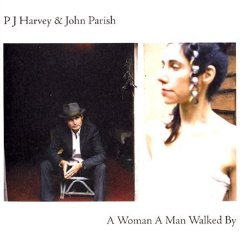 For instance, her most accessible album, Stories From The City, Stories From The Sea (2000), which although sounded in some ways commercial for Harvey was really anything but when compared to Top 40 fare, was followed by a return to rawness and simplicity in Uh Huh Her (2004), reminiscent of some of her earliest work. Next came White Chalk (2007), completely piano-based, a first for her.
For instance, her most accessible album, Stories From The City, Stories From The Sea (2000), which although sounded in some ways commercial for Harvey was really anything but when compared to Top 40 fare, was followed by a return to rawness and simplicity in Uh Huh Her (2004), reminiscent of some of her earliest work. Next came White Chalk (2007), completely piano-based, a first for her.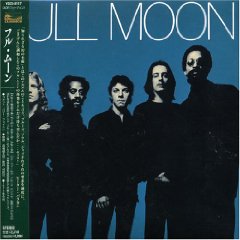 The self-titled album Full Moon from 1971 fits into this category. Three of its members came from the Paul Butterfield Blues Band, drummer Phillip Wilson and tenor saxman Gene Dinwiddie (billed as Brother Gene Dinwiddie throughout the album’s credits), both of whom joined Butterfield around 1967 for The Resurrection Of Pigboy Crabshaw, and Buzz Feiten, who joined Butter a little later in ’68 replacing guitarist Elvin Bishop. Feiten, who did a stint with the Rascals after Butterfield, was one of the most unusual additions to Butterfield’s band, younger than most of the other players, precocious, almost punk for 1968. He brought a different sound and style and great versatility to the band with his piercing Fender Strat, cut more from a soul vein than blues.
The self-titled album Full Moon from 1971 fits into this category. Three of its members came from the Paul Butterfield Blues Band, drummer Phillip Wilson and tenor saxman Gene Dinwiddie (billed as Brother Gene Dinwiddie throughout the album’s credits), both of whom joined Butterfield around 1967 for The Resurrection Of Pigboy Crabshaw, and Buzz Feiten, who joined Butter a little later in ’68 replacing guitarist Elvin Bishop. Feiten, who did a stint with the Rascals after Butterfield, was one of the most unusual additions to Butterfield’s band, younger than most of the other players, precocious, almost punk for 1968. He brought a different sound and style and great versatility to the band with his piercing Fender Strat, cut more from a soul vein than blues.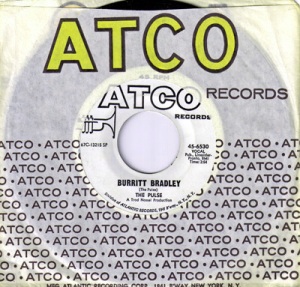 In January, 1968, Pulse started rehearsing in earnest to play some live dates and start recording its first album. The first gig was to be at a small club in Watertown, the Shack. We used to rehearse in what was called the Shed in back of Syncron Studios. The rehearsal room was an unfinished concrete-floored area no larger than a two-car garage with 2×4 framing exposed on the first floor of what looked like an old barn. This was perhaps the most dangerous place I’ve ever rehearsed, yet we carried on in the Shed for 2-plus years as Pulse.
In January, 1968, Pulse started rehearsing in earnest to play some live dates and start recording its first album. The first gig was to be at a small club in Watertown, the Shack. We used to rehearse in what was called the Shed in back of Syncron Studios. The rehearsal room was an unfinished concrete-floored area no larger than a two-car garage with 2×4 framing exposed on the first floor of what looked like an old barn. This was perhaps the most dangerous place I’ve ever rehearsed, yet we carried on in the Shed for 2-plus years as Pulse.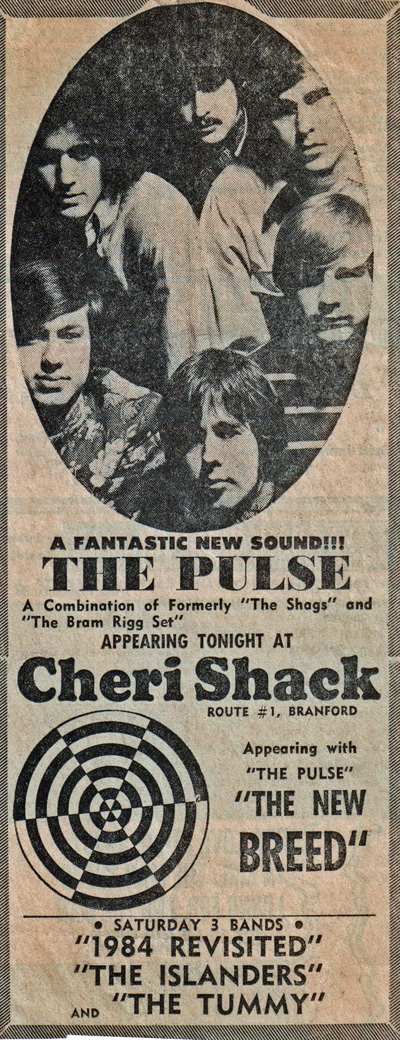 Soon after forming, we added a sixth member, Jeff Potter, who played a mean blues harp and also added percussion with a conga drum and eventually occasional keyboards. Ray Zeiner, the keyboard player from the Wildweeds, had recommended him. Jeff and Ray lived next door to each other right down on the Connecticut River up near Hartford. Those houses are no longer there since the area flooded every so often. The Weeds had recently come into the fold with Doc (via their terrific single No Good To Cry) and Jeff had grown up and gone to Windsor High with Al Anderson and other members of the band.
Soon after forming, we added a sixth member, Jeff Potter, who played a mean blues harp and also added percussion with a conga drum and eventually occasional keyboards. Ray Zeiner, the keyboard player from the Wildweeds, had recommended him. Jeff and Ray lived next door to each other right down on the Connecticut River up near Hartford. Those houses are no longer there since the area flooded every so often. The Weeds had recently come into the fold with Doc (via their terrific single No Good To Cry) and Jeff had grown up and gone to Windsor High with Al Anderson and other members of the band.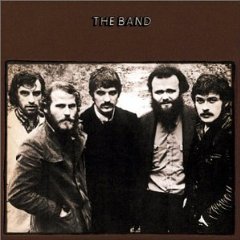 Despite the triumph of Woodstock, the year ended on the foreboding trajedy of Altamont. It was the year the Beatles said farewell, another dream that was ending. So when I think about 1969, I don’t necessarily think of great albums first. But as
Despite the triumph of Woodstock, the year ended on the foreboding trajedy of Altamont. It was the year the Beatles said farewell, another dream that was ending. So when I think about 1969, I don’t necessarily think of great albums first. But as 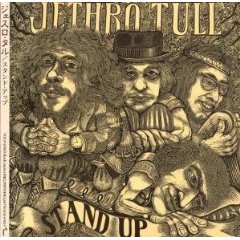 The Band, The Band: Their second release and perhaps my favorite, along with Stage Fright, filled with songs that make up one of the foundations of today’s Americana movement.
The Band, The Band: Their second release and perhaps my favorite, along with Stage Fright, filled with songs that make up one of the foundations of today’s Americana movement.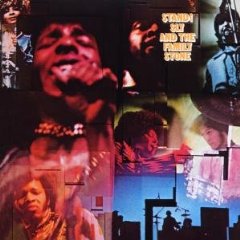 A Salty Dog, Procol Harum: Speaking of prog, but really is it? Using classical ideas and instrumentation in a tasteful combination is more like it.
A Salty Dog, Procol Harum: Speaking of prog, but really is it? Using classical ideas and instrumentation in a tasteful combination is more like it.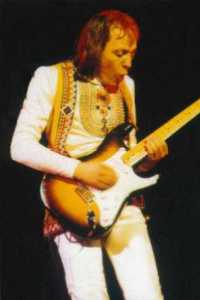 Two stand out above the rest though. The more recent was on Oct. 18, 1977. I know the date not because I still have a ticket stub, but because the concert became an album release for the headliner, Robin Trower (left, top), titled King Biscuit Flower Hour Presents, recorded at the now demolished New Haven Coliseum.
Two stand out above the rest though. The more recent was on Oct. 18, 1977. I know the date not because I still have a ticket stub, but because the concert became an album release for the headliner, Robin Trower (left, top), titled King Biscuit Flower Hour Presents, recorded at the now demolished New Haven Coliseum.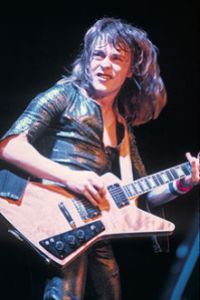 The opening act was the group Derringer, led by another guitar flash Rick Derringer (left). Since Derringer had released its first album in 1975, they had toured relentlessly and played in Connecticut frequently and New Haven often at the Arcadia Ballroom on Whalley Avenue, which at one time was a Nelke Motors dealership, selling Mercedes cars, and in Waterbury at the Red House.
The opening act was the group Derringer, led by another guitar flash Rick Derringer (left). Since Derringer had released its first album in 1975, they had toured relentlessly and played in Connecticut frequently and New Haven often at the Arcadia Ballroom on Whalley Avenue, which at one time was a Nelke Motors dealership, selling Mercedes cars, and in Waterbury at the Red House. Until then, it had fetched rather pricey numbers on auction sites despite not having been a big seller at the time of its release in 1968. Still it was one of the defining blues-rock albums of the times, bringing together an almost perfect combination of singer, players and producer for a raw blues outing with unbridled energy. And some of the best playing by some of England’s best musicians.
Until then, it had fetched rather pricey numbers on auction sites despite not having been a big seller at the time of its release in 1968. Still it was one of the defining blues-rock albums of the times, bringing together an almost perfect combination of singer, players and producer for a raw blues outing with unbridled energy. And some of the best playing by some of England’s best musicians. The guitar solos are ferocious on most cuts and although Clapton is said to have played on only four, he is extremely recognizable on the heavy groove of Lightnin’ Hopkins’ Feel So Bad, I’m Gonna Leave You (perhaps the album’s best two tracks), It Takes A Lot To Laugh, It Takes A Train To Cry and In My Girlish Days. This was confirmed on a Velez compilation, Angels Of The Future Past, released on CD in the late ’80s. The other solos are just as powerful and inventive, perhaps attributable to the only listed guitarist on the session, Rick Hayward, although Spit James (Keef Hartley) and Paul Kossoff (Free) are said to have also participated.
The guitar solos are ferocious on most cuts and although Clapton is said to have played on only four, he is extremely recognizable on the heavy groove of Lightnin’ Hopkins’ Feel So Bad, I’m Gonna Leave You (perhaps the album’s best two tracks), It Takes A Lot To Laugh, It Takes A Train To Cry and In My Girlish Days. This was confirmed on a Velez compilation, Angels Of The Future Past, released on CD in the late ’80s. The other solos are just as powerful and inventive, perhaps attributable to the only listed guitarist on the session, Rick Hayward, although Spit James (Keef Hartley) and Paul Kossoff (Free) are said to have also participated.